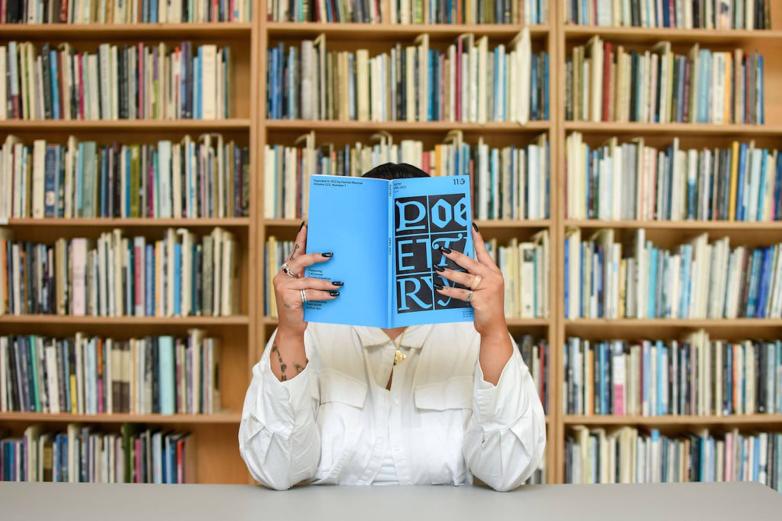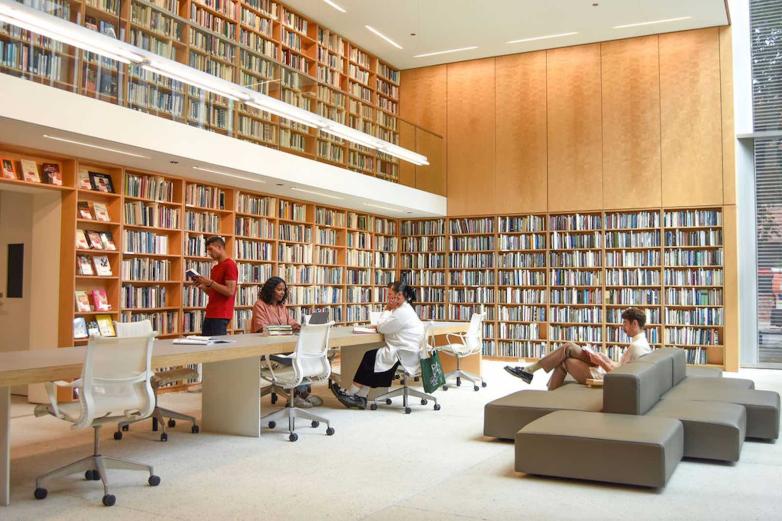What are you looking to acquire? What areas are you looking to build in?
I am always looking for new poetry publishers that I’m not currently aware of. The field is so rich and there are so many amazing smaller presses; these are the ones that I most want to learn about so that we can make their works available for readers now and into the future. I also love to acquire early editions of poets' work. You can learn so much about the historical context of a poem by seeing how it appeared in its original publication; that depth of context is one of the things that makes our collection unique.
What collection is most frequently accessed by researchers?
Our largest collection, which consists of single author volumes of poetry written for adults, is the most frequently accessed area of our collection. It’s wonderful to be able to share titles with visitors that are difficult to find elsewhere, and to connect readers with books they may have heard of but have never had the chance to read.
What are some of your favorite works or collections in your library?
I have a particular love for our children’s collection, which contains some truly gorgeous and surprising titles. Contemporary poetry books for children are just delightful; I’m proud of the collection we’ve assembled for young readers. Some of my forever favorites are They Say Blue by Jillian Tamaki, Drum Dream Girl by Margarita Engle, and the anthology A Velocity of Being: Letters to a Young Reader, Edited by Maria Popova and Claudia Bedrick.
What are some unexpected collections in your library?
We have a large collection of chapbooks, which people outside of the poetry community might refer to as pamphlets. Chapbooks are small print run poetry books that are often staple bound or saddle stitched, and they represent an integral part of the poetry ecosystem in that many poets release a chapbook before they release a full length collection. Chapbooks are also connected to DIY publishing and zine culture, and many have been assembled by their publishers by hand.
Within our larger chapbook collection are many important works by Midwestern presses such as Broadside Press, which was founded by poet and librarian Dudley Randall in Detroit, and 7 Flowers/Renegade Press, run by poet D.A. Levy out of Cleveland. We also have wonderful collections of works by Burning Deck Press, from Providence, run by poets Rosemarie and Keith Waldrop, just to name a few from within this larger body of material.
Any upcoming exhibitions?
We currently have the exhibition Harriet Monroe & the Open Door, which will be up through January 13th, 2024.This exhibition is a biographical sketch of Harriet Monroe, founding editor of Poetry magazine. Monroe was a fascinating woman who had an indelible impact on modern literary history. This exhibit provides context to Monroe’s editorial philosophy, looking at her in the context of the late 19th and early 20th centuries. It includes works loaned from the Special Collections at the University of Chicago as well as the Newberry Library, alongside items from our own collection. It also includes original artwork by the artist and illustrator Lilli Carré which we commissioned for the exhibition, which tells Monroe’s story in the form of a comic book.

















